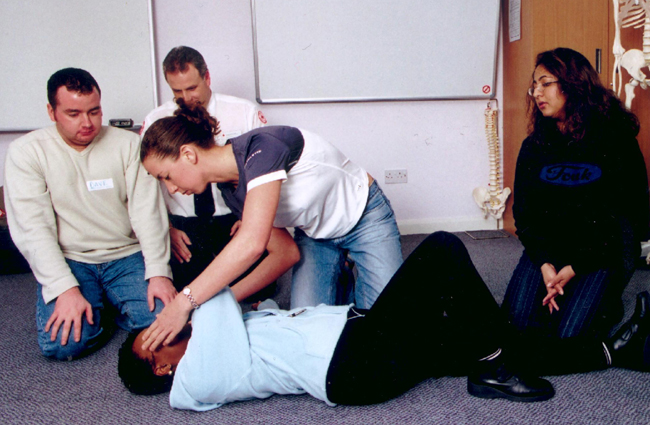Most people will have some kind of medical emergency at some point in their lives. There is also a distinct possibility that they will be at work when it happens. That’s why it’s so important for someone, or several people, at every workplace to be trained in the basics of first aid. When someone’s heart stops beating, the time period to save that person’s brain function can be very small. Someone nearby administering CPR until the paramedics arrive can make the difference between a tragedy and a full recovery. That’s why it’s so important for a business to have staff trained in first aid. You can hire a company to come and train your employees to be first responders.
The basics of first aid follow the acronym D.R.S.A.B.C.D. These initials help first responders remember the order in which to administer care.

Danger
The first thing a program such as Workplace Life Savers will teach is to check for danger. In an industrial setting, you might not know what caused someone to suffer an accident, so you should check your surroundings to be sure you are not placing yourself in danger.
Response and Send for Help
This step refers to checking to see if the person is responsive. You should ask that person to open his or her eyes, state a name, or something similar. If they are responsive, stay with them until help arrives. If they are unresponsive, have someone else alert the authorities and move on to the actual first aid.
Airway
Tilt the person’s head back and check the airway. If the airway is blocked by something, remove that something. If the airway is unobstructed, you can move on to the next step.
Breathing
Check the person’s breathing by looking for chest movement, listening for air, and feeling for any air leaving the nose and mouth. If he or she is breathing, then stay with them until help arrives. If he or she is not breathing, then you should give them two quick intake breaths. If that does not work, you can move on to the next step.
Compressions
These are one of the most crucial and most difficult steps in the first aid administration. It involves proper technique and very strict adherence to the process. This is quite possibly the most important step you learn from a skilled instructor, who can show you how much pressure to apply and the rate at which to compress.
In the past, some felt that rescue breaths were necessary as well, but recent research suggests that it is not as necessary. It is also much more difficult for unskilled rescuers, so they should focus on compressions.
Defibrillation
This is the last step and requires a high level of skill to perform. You should definitely be trained by a professional before you attempt to use a defibrillator. However, they might be absolutely crucial in restoring someone’s heartbeat.
All of these techniques can be learned from a skilled professional who can make your workplace a safer environment.
